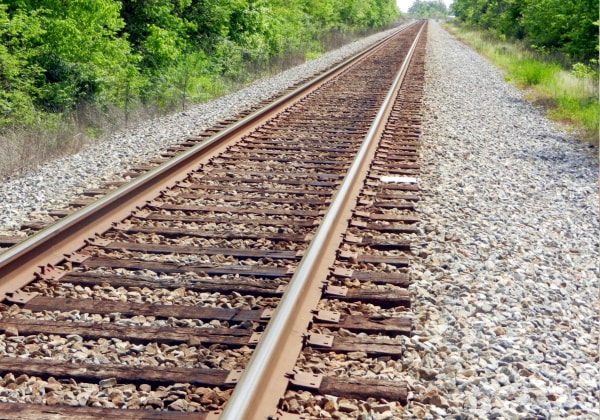Soda locomotives saw very limited use, and though I’ve found some awesome photos and descriptions thanks to the research of enthusiasts online, I haven’t really found anything describing what exactly the process of draining the probably-boiling-hot caustic slop from the locomotive and refilling it with water and fresh caustic soda looked like. Soda locomotives saw very limited use, and though I’ve found some awesome photos and descriptions thanks to the research of enthusiasts online, I haven’t really found anything describing what exactly the process of draining the probably-boiling-hot caustic slop from the locomotive and refilling it with water and fresh caustic soda looked like.
So I thought I’d reach out to another community of enthusiasts and see if you might be able to extrapolate from the other ways they did things (or how it could be done now).
Sorry if this is obvious to or kind of a trivial question, I’m not super familiar with the logistics around normal trains.
The reason I’m asking is that I’d like to feature these in a story I’m working on, and maybe some art, but I want to make sure it’s reasonable, even if it’s not how things shook out in real life.
Mostly I’m wondering: if these locomotives had obtained mainstream use, what would the station where they swap wet soda for fresh look like? (A water stop and some kind of screw elevator or rig for blowing in the powder/granules?) I don’t necessarily need to write an engineer-level description so much as something a casual observer would see, but if you have that knowledge I’d be thrilled to read it and use as much as possible. I’d also love any suggestions about how you might modernize the design or the processes of filling it, especially for safety.
I really like the idea of a (sunny) place using big solar concentrators to dry the soda essentially for free. It seems like it could be very efficient in terms of using heat in the form we get it, and the simpler analog tech appeals to me since I’m often writing about rebuilding societies.
Thanks very much!!
Wow. This is something I have never heard of before but it conceptually makes sense albeit I am a have no idea how long a tank would run a train for. Would love to learn more too, so please link is to whatever it is your are creating. Hoping a video on the topic.
Thanks! So far that site seems to be the best source of information I’ve been able to find (the Wikipedia article seems to mostly be a restated, trimmed down version of it) but there are a few other articles online I’m trying to vet for accuracy.
I’m especially interested in this quote:
“A fireless soda engine, together with evaporating apparatus, has been at work on the Aix la Chapelle-Burtscheid tramway for the last half year. In order to test the working capacity of this locomotive engine, and the consumption of fuel on a certain day, the Honigmann locomotive engine was put to work this day from 8:45 o’clock am till 8 o’clock pm, with a pause of three-quarters of an hour for the second quantity of soda lye. The engine was, therefore, at work for fully 10� hours, viz, 5� hours with the first quantity, and five with the second. The distance between Heinrichsalle and Wilhelmstrasse, where the engine performed the regular service, is 1 km, […] This distance was traversed sixty-four times, the total distance, including the journeys to the station, being 66 km.”
So it sounds like it ran for about five hours and traveled 33km on its load of caustic soda (I’m not sure at a glance which flavor chemical) and only took 45 minutes to refuel and come back up to temp.
And these were early designs, basically prototypes (though granted, the folks in that time making them probably knew a ton about steam locomotives). I imagine they could have been improved with time to study and refine the designs.
I’m not sure how well the boilers stood up to containing hot caustic stuff, but perhaps materials science has developed enough to help protect against that.
I’m writing and making visual art in the solarpunk genre, which tends to heavily emphasize trains and other public transit. But I want to broaden our options a bit beyond just electric trains. When I first heard about these, I felt like they’d mix super well with another invention of that time period, the mirrored solar concentrators used to run steam generators (some of the earliest solar power).
After all, one of the biggest disadvantages of the caustic soda locomotives was that it took more coal to dry the soda than to produce an equivalent amount steam directly with coal. But you don’t have to use coal. These 1800s mirrored dishes only require mirrors or polished metal and math to make (plus some simple motors and electronics to get them to follow the sun) and they could dry the soda for free. A lot of my focus is on less utopian, rebuilding societies, so trains and solar concentrators built with 1800s technology seems like a good place to start.
I’m going to start with a picture of a stop along the tracks for replenishing the soda in this style

using a layout something like this:

plus a description. And I’m hoping to work them into a fiction story and a tabletop campaign.
As for the technical side, I’m not sure on whether they’ll be draining the diluted caustic soda and pouring in fresh, whether they’ll be drying it inside the locomotive’s boiler using superheated steam generated with a solar boiler besides the tracks, perhaps swapping locomotives to avoid delays, or even swapping boilers as someone on reddit suggested. If I go with swapping the soda, probably the boiler tank won’t actually be inside the dish, but nearby, with the steam from the dish heating it.
I hope that helps, I’m very new to this technology and am already trying to mix it with other stuff so we’ll see how it goes.
Oh wow. What a great reply and a super cool project you are working on. You have inspired me too as one of the attractions in my VR Theme Park I am Imagineering is about trains and I would love to add a foot note about these. Thanks so much.
That’s awesome! Best of luck!
deleted by creator
Sure thing! There were a bunch, (and there are tons of solar cooker and solar concentrator designs!)
I’ll admit I’d mostly been thinking of this guy but there were a bunch of other inventors doing similar things around the same time
Considering that most of the descriptions I’ve seen of drying the caustic soda mention pumping superheated steam through it, and that almost any of these systems, or something like these modern ones could produce that, there’s probably lots of ways to match these trains to analog solar power.
This thread had some really cool info on how these went together and the ages of the various components: https://www.reddit.com/r/solarpunk/comments/1b8048e/comment/ktmjpst/?utm_source=share&utm_medium=web2x&context=3



